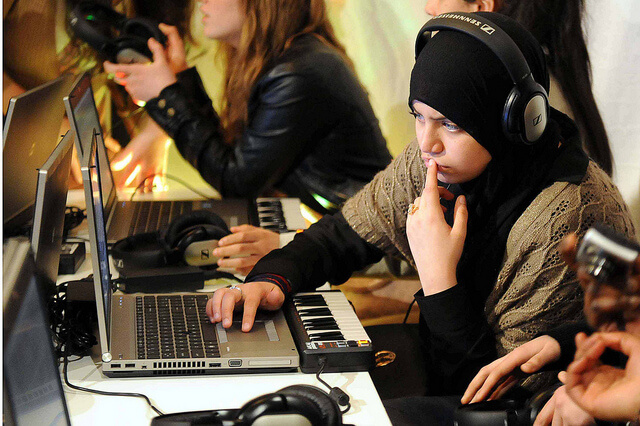“Gender equality should be promoted in the design and implementation of ICTs and in the policy decisions and frameworks that regulate them.”
Office of the United Nations High Commissioner for Human Rights (OHCHR)
We know that bridging the gender digital divide is a priority if we want to achieve the SDGs, so we’re pleased that we could contribute to a report on ways to bridge the gender digital divide from a human rights perspective by the Office of the United Nations High Commissioner for Human Rights (OHCHR) alongside our A4AI partners including APC, ISOC and World Pulse, and Women’s Rights Online partner IT for Change.
Previous United Nations resolutions have paved the way for the adoption of a human rights and women’s rights approach to the internet and digital development. This includes resolution 68/167, adopted by the General Assembly in December 2013 (affirming the right to privacy in the digital age), and resolution 32/L.20 adopted by the UN Human Rights Council in July 2016 (reaffirming the promotion, protection and enjoyment of human rights on the internet). In the latter, the Human Rights Council requested that the United Nations High Commissioner for Human Rights develop a report on bridging the gender digital divide from a human rights perspective.
The report recognises that the digital gender gap is expanding, and that immediate attention is required from governments to halt and reverse this trend. The report goes on to acknowledge that the gender digital divide is not only about access, but translating access into empowerment. As we note in our Women’s Rights Online study of 10 countries, the dramatic spread of access to mobile phones is not enough to get women online, or to achieve the Sustainable Development Goals on women and technology (1.4, 5b, 9c). Our study found that despite increasing access to mobile phones, women are 50% less likely to use the internet than men in the same communities, and 30-50% less likely to use the internet for economic and political empowerment. Bridging the digital gender divide is therefore not only about access, but translating access into meaningful use of the internet as a tool to expand women’s life choices.
The OHCHR report upholds that the “gender digital divide is both a consequence and cause of violations of women’s human rights”, and that systemic barriers to women’s rights need to be addressed to tackle the gender digital divide. In line with Section J of the Beijing Declaration and Platform for Action, a global framework for gender equality, the report notes that, “women without meaningful ICT access are less equipped to exercise their human rights and to participate in public life, the economy and society.” Access to ICTs — and the internet in particular — is recognised as a significant factor impacting women’s rights to work, health, education, and participation in cultural life, well as the rights of women with disabilities and the rights of girls.
The report outlines human rights-based approaches and recommendations to close the gender digital divide, some of which include:
- Make the internet “widely available, accessible and affordable to all.”
- Develop ICT policies and strategies “in consultation with individuals from all segments of society”.
- Uphold “key principles such as accountability, equality and non-discrimination, participation, transparency, empowerment and sustainability.”
- “Facilitate the enjoyment of the right to freedom of expression and the means necessary to exercise this right, including the Internet.”
- Protect people within state jurisdictions “from undue interference with their human rights by third parties, including business enterprises.”
- Guarantee women’s right to privacy and in particular “the ability to benefit from encryption, anonymity or the use of pseudonyms on social media.”
- Establish and maintain “an enabling online environment that is safe and conducive to engagement by all, without discrimination and with special attention to the needs of groups facing systemic inequalities.”
- “Combat online violence against women while safeguarding the freedom of opinion and expression and the realization of other rights, such as the right to access information about sexual and reproductive health and rights.”
- Ensure that algorithms, artificial intelligence and automated decision-making processes do not perpetuate bias, are consistent with human rights, and are “transparent and accountable for the analyses and decisions they deliver.” The report emphasises a critical of window of opportunity to ensure that new data-driven technologies do not reinforce gender bias and discrimination against women.
We urge all Human Rights Council Member States to adopt policies and strategies to close the gender digital divide from a human rights perspective.
Our Women’s Rights Online Digital Gender Gap Audit found that without major escalation of policy effort and investment, most of the benefits of technological change will be captured by men. The Alliance for Affordable Internet further predicts that on our current trajectory we will only achieve universal affordable Internet access in 2042. Governments must REACT to close the digital gender divide by focusing on Rights, Education, Access, Content, and Targets. Failure to close the gender divide in digital access and empowerment from a human rights perspective risks further entrenching gender inequality and women’s exclusion from economic, political and public life.
